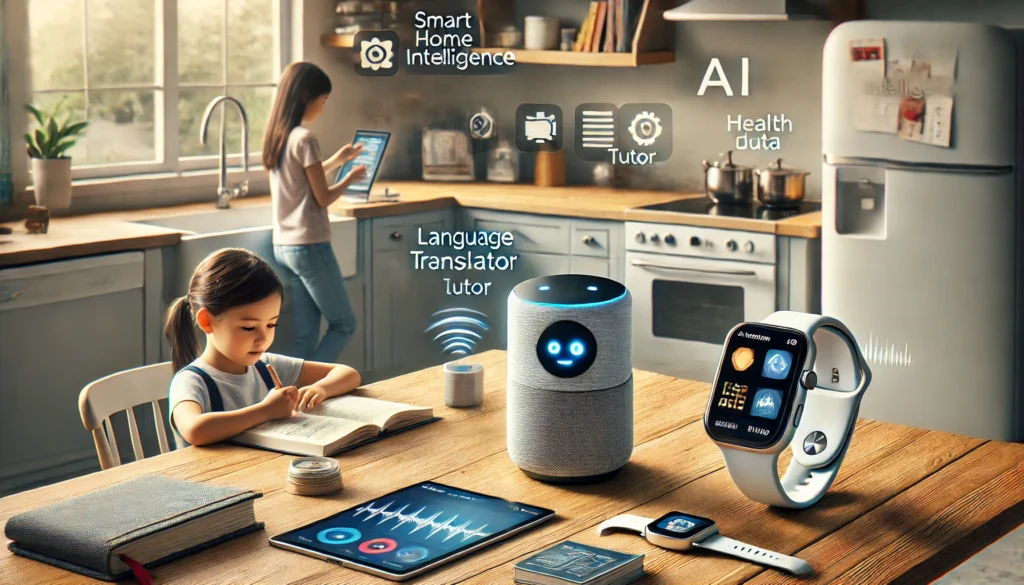How Artificial Intelligence is Changing Everyday Life
Artificial Intelligence (AI) is no longer a concept confined to science fiction or research labs. In 2025, AI has become deeply embedded in our daily routines, influencing the way we work, learn, communicate, and even relax. Whether you’re using a voice assistant to play music, relying on predictive text while writing emails, or benefiting from AI-powered healthcare recommendations, artificial intelligence is shaping a new era of convenience, efficiency, and personalization.

AI at Home: The Rise of Smart Living
Smart homes are among the most visible examples of AI in everyday life. Virtual assistants like Alexa, Google Assistant, and Siri have evolved from simple command responders to proactive companions that understand context and preferences. Today, these systems can:
Adjust lighting and temperature based on your schedule
Suggest recipes using the ingredients in your fridge
Automate cleaning routines with robotic vacuums and mops
Monitor security with facial recognition and motion sensors
By learning user habits, these tools make homes more energy-efficient, secure, and comfortable.
AI in Communication and Language
Chatbots, real-time translation apps, and AI-generated content are changing the way we communicate. In 2025, AI language models help bridge linguistic barriers and provide near-human responses in real-time conversation.
Apps now offer:
Live speech-to-text transcriptions for the hearing impaired
Instant voice translation for travelers
Grammar and tone suggestions for professional writing
AI-generated summaries of long documents and emails
These technologies are making communication more inclusive and accessible.
Education: Personalized and Scalable Learning
AI is revolutionizing education by providing personalized learning paths tailored to each student’s pace and style. Intelligent tutoring systems assess performance in real time and adjust lessons accordingly, helping both advanced learners and those who need extra support.
Key applications include:
AI tutors for math, science, and languages
Essay feedback and plagiarism detection tools
Gamified learning apps with adaptive difficulty
Attendance and participation tracking in virtual classrooms
For teachers, AI reduces administrative burdens and improves student engagement.
AI in Transportation and Navigation
Self-driving technology is progressing rapidly, and although fully autonomous vehicles are not yet mainstream, AI is already improving how we get from place to place.
Examples include:
Route optimization in GPS apps using real-time traffic data
Adaptive cruise control and lane-keeping in modern vehicles
Ride-hailing apps that predict driver demand and ETA
AI-powered parking assistance systems
These innovations enhance safety, reduce travel time, and minimize environmental impact through smarter logistics.
Healthcare: Smarter, Faster, and More Accurate
AI is transforming healthcare by improving diagnosis accuracy, optimizing treatment plans, and expanding access to care.
In 2025, common AI applications in healthcare include:
Diagnostic tools that analyze medical images
Virtual health assistants that monitor symptoms
Predictive analytics for disease prevention
Personalized treatment suggestions based on genetic data
Wearable devices powered by AI are now standard, tracking heart rate, sleep, and even stress levels in real time.
Entertainment and Creativity
AI-generated music, art, and storytelling are gaining popularity, providing both inspiration and competition to human creators. Platforms use AI to recommend content that matches individual tastes with incredible precision.
Popular applications:
Streaming services using AI to curate watchlists
AI-generated art and music collaborations
Video game characters with adaptive behaviors
Personalized news feeds and article recommendations
These advancements raise philosophical questions about authorship and creativity, but they also enable new forms of expression.
The Workplace: Automation and Efficiency
AI is streamlining business operations and changing the nature of work. From automating repetitive tasks to analyzing large data sets, AI tools are boosting productivity across industries.
Common uses in business:
Customer service chatbots
Automated data analysis and reporting
Predictive analytics for marketing and sales
Resume screening in hiring processes
While concerns about job displacement remain, new AI-related roles are emerging in ethics, oversight, and system training.
Ethics and Privacy Concerns
As AI becomes more integrated into society, ethical debates are intensifying. Key concerns include:
Bias in algorithms
Surveillance and data privacy
Consent in automated decision-making
The accountability of AI-driven outcomes
Governments and tech companies are increasingly developing frameworks to ensure responsible AI development and use.
AI in the Environment and Agriculture
AI is also helping tackle global challenges like climate change and food security. Examples include:
Predictive models for weather and disaster management
AI-controlled irrigation systems to reduce water waste
Drones that monitor crop health and soil conditions
Smart grids that optimize energy distribution
These solutions demonstrate how AI can serve both economic and environmental goals.
Final Thoughts: Living with AI
AI is no longer a tool of the future—it’s part of our present. It enhances daily life in ways that are often invisible but deeply impactful. From simplifying tasks to enabling smarter decisions, artificial intelligence is helping individuals and societies evolve.
As we move forward, the key lies in using AI not just for convenience, but for progress that benefits everyone—ethically, sustainably, and inclusively.